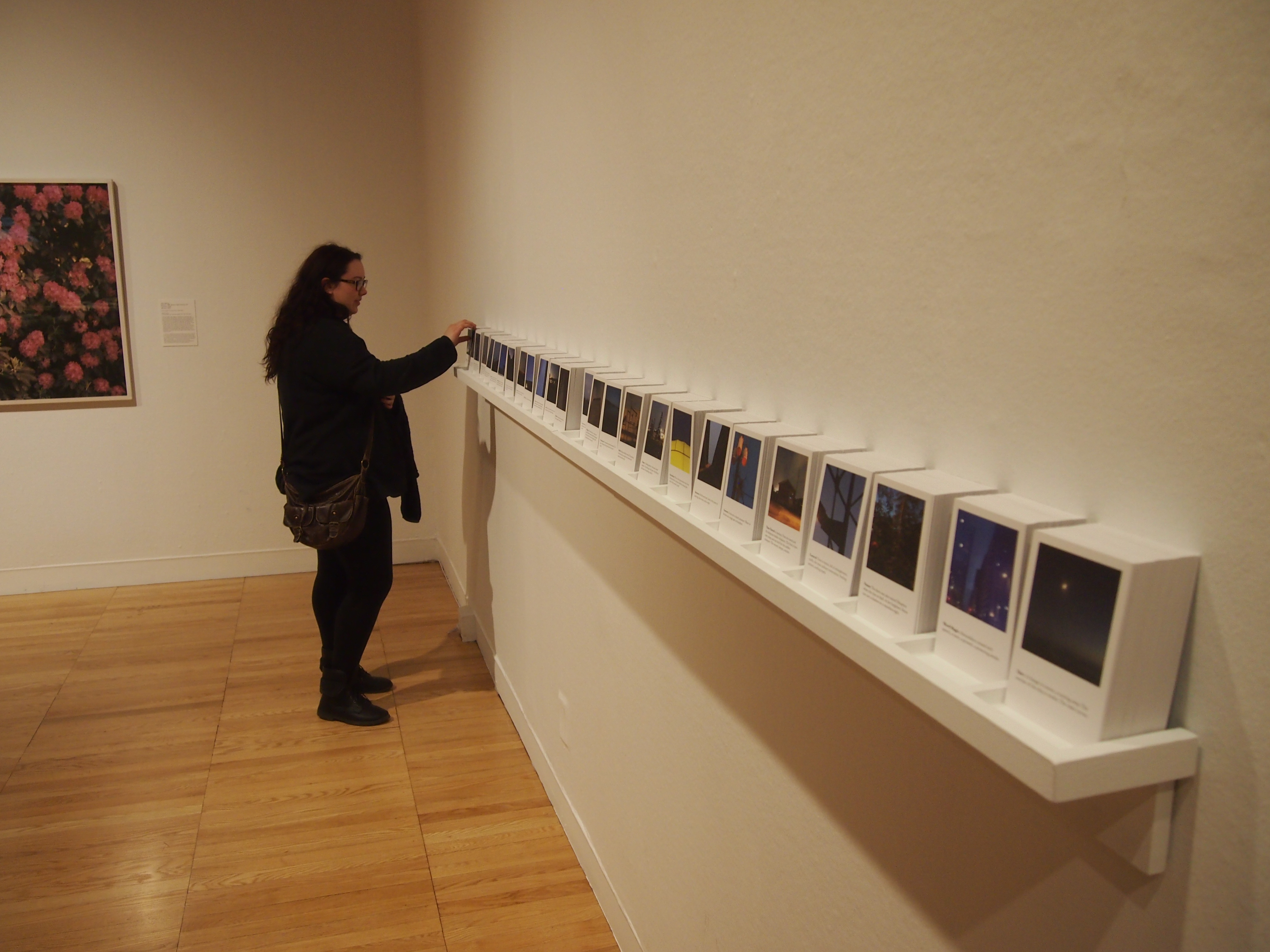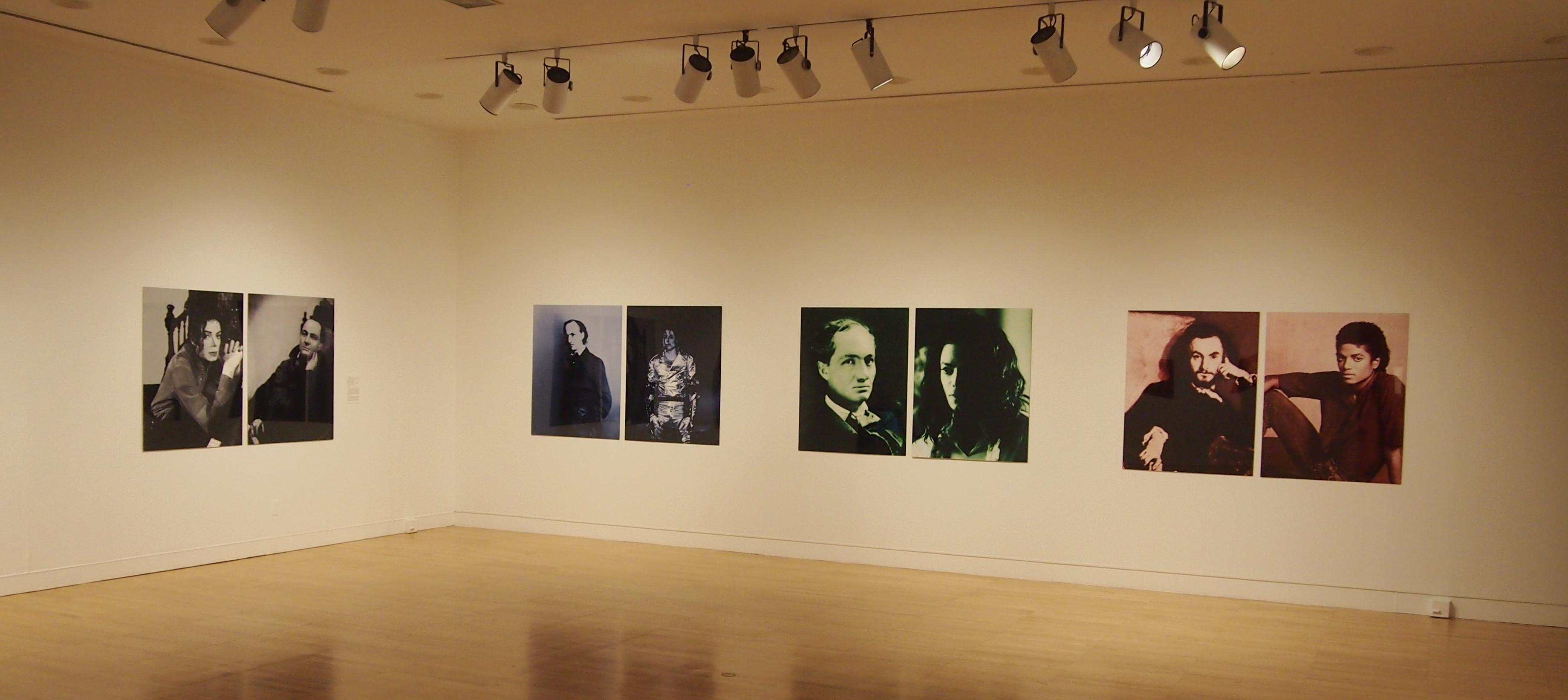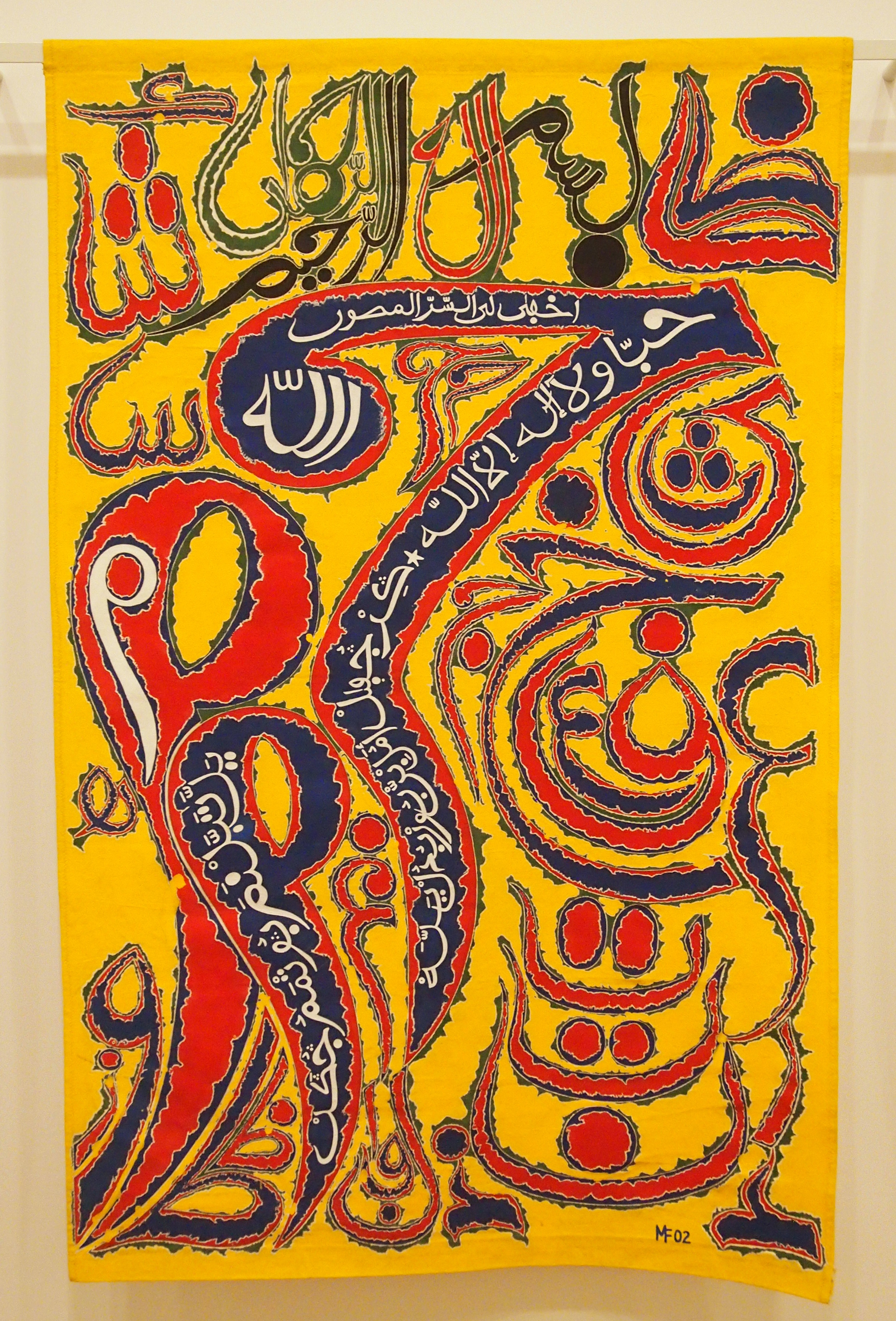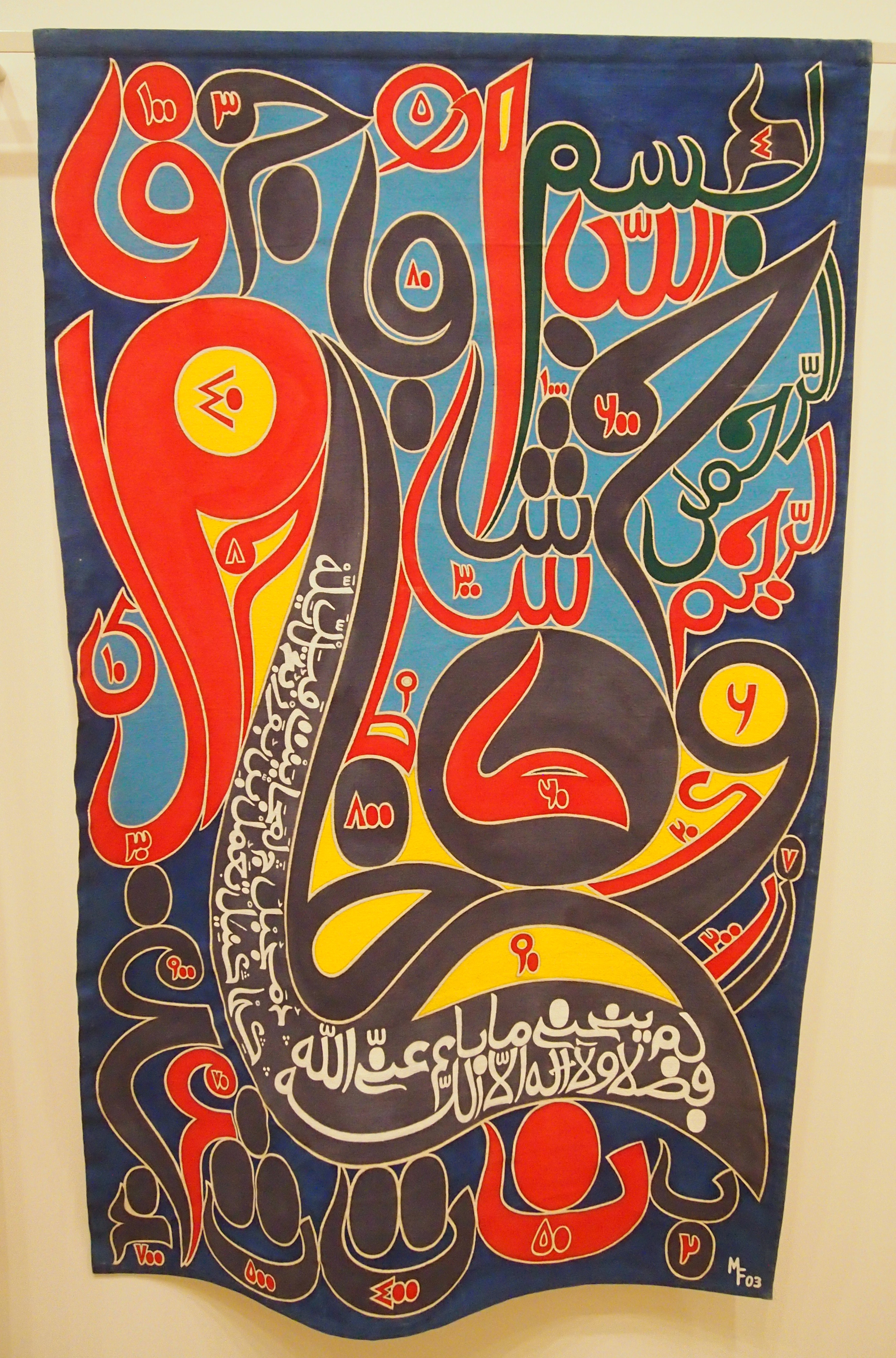Time to praise university art museums: generally unpretentious, inexpensive and not so large that you can’t have a good look-see in a short time. One of the places Lilly and I visited at the University of Illinois Urbana-Champaign was the Krannert Art Museum, which has ten galleries and art ranging from ancient Egypt and Pre-Columbian to much more recent items.
One so recent that it was created using an iPhone: “A Lexicon of Dusk.”
 Over the last six years, a Houston artist named Ruth Robbins took her iPhone out and took pictures at dusk. From these, she made a series of 26 different postcards, copies of which were on a long shelf at the gallery. That’s the artwork.
Over the last six years, a Houston artist named Ruth Robbins took her iPhone out and took pictures at dusk. From these, she made a series of 26 different postcards, copies of which were on a long shelf at the gallery. That’s the artwork.
“Printed as postcards for the viewer to take away — a distributed work of art in line with conceptual art practices — the images show richly colored ambiguous skies and whatever else she happened to have seen at the time: lights low on the horizon, an electricity pole, a snow-covered landscape, an equestrian statue,” the sign near the cards says. “Longitude and latitude coordinates are documented on each image…” That, and an exact date and time when the image was made.
The best part? Postcards are free to take, adds the sign. I took one of each. I’ve already mailed a few.
In the room adjoining the postcard exhibit was an amusing series called “The First and Last of the Modernists,” by Lorraine O’Grady, pairing images of Baudelaire with Michael Jackson.
 I’ve had a soft spot for Baudelaire since an entertaining acquaintance of mine recited “Be Drunk” — I think it was this translation — at a party at our house late in my college years, ca. 1982. As for the King of Pop, I can’t claim to be a fan, but I respect his reach. I heard his songs walking down the streets of the 10 European countries I visited in the summer of ’83, even East Germany, but maybe not the Vatican City, and even then I might have heard something from a transistor radio someone was carrying at the Piazza San Pietro.
I’ve had a soft spot for Baudelaire since an entertaining acquaintance of mine recited “Be Drunk” — I think it was this translation — at a party at our house late in my college years, ca. 1982. As for the King of Pop, I can’t claim to be a fan, but I respect his reach. I heard his songs walking down the streets of the 10 European countries I visited in the summer of ’83, even East Germany, but maybe not the Vatican City, and even then I might have heard something from a transistor radio someone was carrying at the Piazza San Pietro.
Another room sported some African art. Not just pre-Scramble works from lost states and misty kingdoms, but more modern items. These are two of a particularly striking series, “Seven Lines From Djwartou” by Yelimane Fall.

 I appreciated these visually, not as someone who can read Arabic. The artist-calligrapher hails from Senegal, and is a devotee of one Sheikh Amadou Bamba, founder of the Sufi brotherhood Mourides in that country, and who wrote the poem “Djawartou” in the early 20th century, among many other things.
I appreciated these visually, not as someone who can read Arabic. The artist-calligrapher hails from Senegal, and is a devotee of one Sheikh Amadou Bamba, founder of the Sufi brotherhood Mourides in that country, and who wrote the poem “Djawartou” in the early 20th century, among many other things.
As the BBC notes, “Senegal’s most powerful men are not politicians, but the leaders of the country’s Islamic Sufi brotherhoods, to which a very large proportion of Senegalese belong, and whose influence pervades every aspect of Senegalese life.”
Seems that the Mourides are a very big deal in their corner of the world and, from what I can tell from a brief look, eschew the poisons of Wahhabism, and stress hard work among their members (work hard, make money, support the sect). And there are enclaves of them elsewhere. According to Religion News, “Their dictum, ‘pray as if you will die tomorrow and work as if you will live for ever,’ has brought the Mourides economic success wherever they have settled. In New York, the Mourides established their own community, Little Senegal, and July 28 has officially been designated Sheikh Amadou Bamba day.”
Remarkable the things that go into making an image on the wall. I never knew any of that. I don’t expect to make a detailed study of Senegal, but it’s good to be reminded that there are whole other worlds here on Earth yet beyond one’s experience.